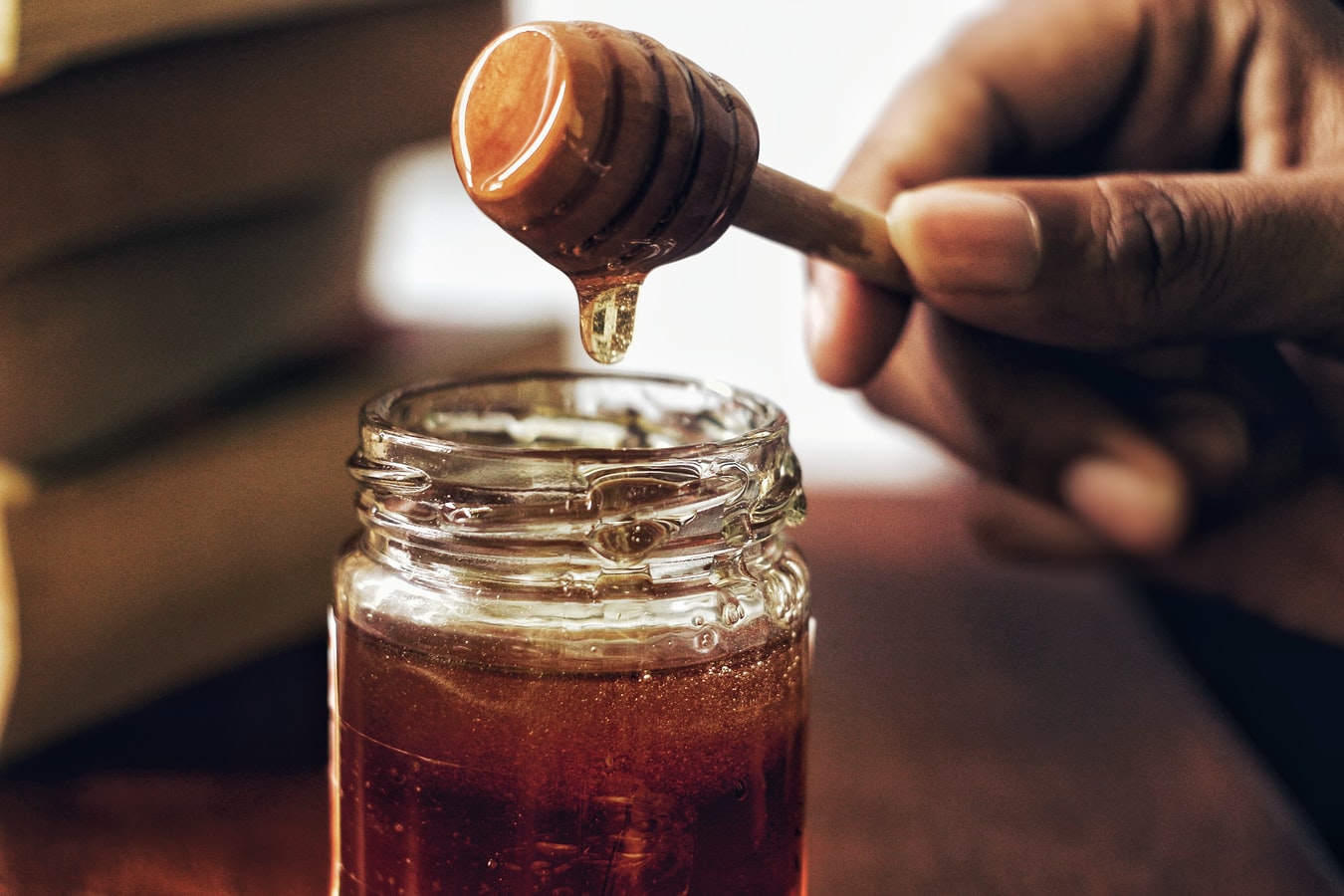By Mira Brody EBS ARTS & ENTERTAINMENT EDITOR
BOZEMAN – Steve Thorson doesn’t believe in squeezable honey, and if you ask him or his wife Joyce about it while perusing their shop in Downtown Bozeman, they’ll gladly point to a sign on the wall mocking the little plastic bears we’ve been buying from the grocery store for generations.
“Real honey is way too valuable to be throwing it into plastic bottles,” says Thorson. You see, it has a legacy in human culture—a 3,500-year-old jar was recently discovered by archeologists in an Egyptian tomb, making it the best- and longest-known natural substitute for processed sugar, with antibacterial, medicinal and allergy assuaging qualities to boot. Paired with a virtually unlimited shelf life, honey is practically divine.
Montana Honey Bee Company has been in Downtown Bozeman for four years now, but the Thorsons have been keeping bees in the Gallatin Valley for closer to 15.
With a background in construction and architecture, Steve built some of their first hives, and Joyce, tired of her job as a TSA agent at Bozeman Yellowstone International Airport, was ready for a career change. It was only after they were producing more honey than they could give away that they decided Joyce should quit and they would open the storefront on South Tracy Ave in Downtown Bozeman. Today, the shop is well-stocked by their 75 hives of hardworking honeybees.
Although most honeybees are considered “mutts,” the variety we most commonly see here in North America are a variation of the Carniolan Russian bee. You may also be surprised to learn that bees are not a native species—they were brought here from Europe around 1700.
Thorson teaches beekeeping courses and says the hobby is thriving in the Gallatin Valley—he sees nearly 100 students a year of all ages, some as young as six, and estimates there are about 150-200 hives within Bozeman City Limits and nearly 200,000 in the county. Good thing too, since Montana consistently ranks amongst the top four honey-producing states in the country.
“If you had a beehive on the top of this roof, those bees have the capability of foraging the entire city,” said Thorson. He said bees forage for pollen about 3-5 miles from their hive. “I always tell people, with very few exceptions, there really is nowhere in Montana that you can’t keep bees.”
Unfortunately, as valued and celebrated as honey is, honeybees are constantly under threat by a variety of factors—around 40 percent of honeybees in the U.S. died last year and Montana is not immune to the phenomenon. Thorson calls it a “perfect storm of factors,” citing the Varroa mite—which can infect an entire hive—noxious chemical sprays such as Roundup, and in general, the negative ways in which the general populous treats the environment. Although there are treatments available, bees only continue to get weaker.

At a Pecha Kucha storytelling series titled “Honey Politics,” Thorson recalls presenting a series of slides from an experiment by Whole Foods where the chain removed all products that were honeybee-related. They then took pictures of the produce section, the meat section and the dairy section, before and after.
“The produce section was obliterated,” said Thorson. “The dairy section was almost obliterated, and the meat section was completely obliterated. Because what do cows eat? Alfalfa. What pollinates alfalfa? Honey bees.”
Albert Einstein once said, “If the bee disappeared off the face of the Earth, man would only have four years left to live.” At the very least Thorson believes the disappearance of honeybees would have an incredible impact: “We’d be eating a lot of cardboard.”
Another battle beekeepers face is that of competing with fake honey products. Honey is the third-most faked food in the world, fostering an illegal market of cheap honey tainted by antibiotics outlawed in the U.S. and shipped in from China. It is also common for honey found on grocery store shelves to be micro-filtered and cut with up to 80 percent corn syrup. Due to lax labeling laws that don’t require ingredient listings on honey containers, most consumers are simply unaware of the issue.
It’s a flaw of perception, explains Thorson. The American consumer wants that perfect, golden bottle of honey, when in reality it’s the cloudiness that makes it authentic.
The solution? “Buy as close to the source as you possibly can,” said Thorson.
If you’re interested in starting your own hive, Thorson says patience is key, as beekeeping, although a hobby with high reward, can be a frustrating one.
You’ll have to register your bees with the Department of Agriculture and have $500 to invest in a class and your first hive set up, which includes a hive box, protective gear and your bees. As with any hobby, it is easy to grow as you gain experience.
While planting bee-friendly flowers and trees is also helpful for the population, bare in mind in order to produce a single honey straw one often finds at farmer’s market and the like, a single bee will have to collect the pollen of 25,000 flowers—a lesson, perhaps, from the honeybees to humanity about the effect thousands of small efforts can have on a grand scale.
For more information on these vulnerable pollinators, head to pg. 62 for an article from our sister publication, Mountain Outlaw magazine.













